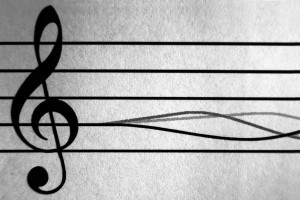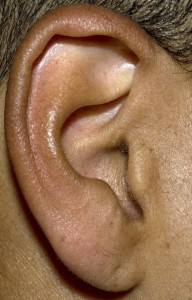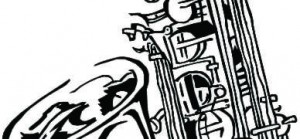Certain problems seem to come up with a lot of saxophone players.
Leave a comment about some other issues you have yourself or have seen!
And enter your email address in the form on the right to download the report on saxophone mistakes!
By Neal 6 Comments
Certain problems seem to come up with a lot of saxophone players.
Leave a comment about some other issues you have yourself or have seen!
And enter your email address in the form on the right to download the report on saxophone mistakes!
By Neal 2 Comments
To learn German, I really ‘got it’ by actually spending two summers in Germany.
I had listened to my set of 15 German language CDs many times and took a year of classes and all that got put to the test once I arrived. My command of the language grew rapidly since I had to talk to people, travel around, and get ahold of a saxophone!
One of the instructors who came from Poland, Voytek, ended up helping me a lot with the saxophone part, but I still had to take a train to the next town over and go to the music shop to rent it.
It’s often repeated that music is a language.
So you have tot immerse yourself in it too!
If you listen to tons of music and constantly test out ‘saying’ things on your saxophone, your playing will grown much much faster.
In the movie ‘It Might Get Loud’, Jack White from the White Stripes talks about how he pushed his bed out of his room and slept on a foam pad so he could fit two drumsets in his small room when he grew up.
I liked that bit.
Makes me want to immerse myself in music more!

Bill Shiner from the Bronx who taught Fred Lipsius (and Stan Getz) said the quote in the title.
Fred Lipsius plays sax and teaches at Berklee.
In a recent interview with David Valdez, Lipsius says,
“There should be some ‘substance’ there, rather than rambling on with lots of notes/technique but not really saying anything meaningful – not telling a story.”

In that interview, he also mentions great saxophone players like Sonny Rollins and how he takes ideas and really develops them.
It helps to be articulate on the saxophone to say the ideas that you have inside.
But being articulate without substance is going to get boring quickly!
Sometimes all it takes is simplification of what you’re playing- taking away the parts that don’t really need to be there and keeping the parts that mean something. You can start with a simple idea and expand on it and take it somewhere.
Duke Ellington band playing ‘Caravan’ back in the day.
This song is a jazz standard that has also been played in some other styles including salsa and being resampled in hip hop. Juan Tizol wrote the tune and it was first performed by Duke Ellington (1937). Tizol also also wrote “Perdido”.
The tenor sax!
And soprano sax…. and trumpet…. and some other instruments too.
Since the trumpet is in Bb and uses treble clef music, you can just straight read a sheet of music for trumpet if you have a tenor sax, soprano sax, clarinet or any other Bb instrument.
There will be some issues with range, so sometimes you need to go up an octave if it goes below a low Bb.
A little while back I heard about a cool trumpet site that has a bunch of solos transcribed.
Miles Davis, Freddie Hubbard, Lee Morgan, and more.
You can hear the solo and see the written music.
Seemed like a great resource.
But remember, transcribing yourself will teach you a ton.

The great sax player Joe Lovano said one time that playing with a group will you make the same pattern you play sound different. For example, if you play the same pattern of notes twice and the chord changes, it will seem like you played something different and it could be more interesting than playing two different things. Repeating an idea helps set up a groove.
A step beyond that, playing the same pattern over the same chord is all right too.
It seems like the same pattern over the same chords will pretty much sound the same, right?
That’s what I would have thought before.
But if you look closely, and the details can make a huge difference, the background will not be exactly the same, so the overall combination will be different.
So that element of playing with other people will constantly change how you sound and can give you ideas of places to go musically.
Basically, you should be careful not to get used to practicing too much with play-alongs, since there is no interaction and many other people practice with the same tracks- so it does not encourage originality.
They are a useful tool, but you want to get out there and jam with other musicians!
By Neal 2 Comments
Every song needs a sax solo, right?
Well….
If it’s your band you can probably take a solo on a good number of songs since you’re what’s featured.
But you don’t want to overdo it!
Every musician in a band doesn’t need to take a solo on every song. Doing that makes the songs either go on for too long or it makes each person’s solo too short to really develop a solo.
So if you’re performing with a combo and doing a set of songs, switch off on who solos.
It will make the your sax solo better if it’s on a song you want to play on and you have enough space to say what you want to say.

By Neal 4 Comments
A while back I wrote about earplugs, saxophone playing and how they can help save your hearing.
Foam earplugs work all right to block out noise, but they don’t do it uniformly across the frequency spectrum.
So if you’re listening, it distorts the music and if you’re playing…. it doesn’t really help your perception of what the other musicians are really playing.
If you are just trying to block out other noise, they work okay. I found that they tend to block higher frequencies more than lower frequencies.
A few months back I got some custom earplugs from a hearing specialist. They’re expensive, but I like them so far.
I went to an audiologist locally, they make a mold and then they make a pair of earplugs based on the shape of the inside of your ears.

You have the option to put inserts in the earplugs that reduce the volume by a variable number of decibels. Most commonly 15 dB or 25 dB it seems like.
Since I play saxophone with a salsa band and am around loud music pretty often, I just got solid custom earplugs. I had hear the inserts could fall out and sometimes I wear them while I’m actively moving around.
They’re not usually necessary in a jazz setting where the musicians play with some finesse.
But in other situations, they can help protect your hearing as a sax player.
World Saxophone Quartet!
I really like the groove on this one.
The World Saxophone Quartet is a bad ass saxophone quartet that plays some crazy awesome music. (Some of it is much crazier than this song too).
They formed in 1977.
It started off with Julius Hemphill (alto and soprano saxophone, flute)
Oliver Lake (alto and soprano saxophone)
Hamiet Bluiett (baritone saxophone, alto clarinet)
David Murray (tenor saxophone, bass clarinet).
The lineup (in this video) is:
Hamiett Bluiett, Oliver Lake, James Carter and Greg Osby
By Neal 2 Comments
In middle school, a year or so into playing the saxophone, I played a note that really clashed during jazz band.
And the music director noticed it!
He didn’t get mad though, he actually pointed it out to the whole group and said that if you’re going to play a note that clashes you should play it outright. Like you meant to.

Another reason for playing out is that sometimes beginning musicians are shy and don’t have a strong sound.
You want intensity when you play saxophone. Even if it’s soft, the intensity should still be there.
Note: The idea of a ‘wrong’ note is a bit of a concern when you’re playing an arrangement in a larger group. Especially as a beginning sax player.
It matter less when it’s with a smaller group, since then you can act like you meant to play it and see where it takes you.
Mistakes can take you in interesting places!
Just buy a saxophone that’s pre-tuned!
Only kidding.
Every note on a saxophone is a little bit different in terms of intonation.
And that means every note on every different kind of saxophone and even the same type of saxophone from the same brand.
So you could be in tune on one note and completely off for another.
Tuners
You can use a chromatic tuner to see whether your notes are sharp or flat. You could also compare your notes to a piano or a tuning fork.
A ‘guitar’ tuner will work. Just realize that the notes displayed aren’t the names of the notes you’re playing. ‘C’ on alto sax will be displayed as a D# or Eb because the note is a concert Eb. ‘C’ on tenor sax will be displayed as a Bb or A# because that’s what the note is in concert pitch.
Adjustments
You’ll need to adjust the mouthpiece a little bit, depending on temperature, conditions, etc (cold will make your tone flat, heat will make it more sharp), but then listen and adjust and get to know how your saxophone works.
You can adjust the position of the mouthpiece- pushing it in will make the tone rise (become more sharp) and pulling it out will make the tone fall (become more flat).
That can help with any one note, however you don’t want to adjust too much for one note if it makes many other notes go out of tune.
Tip: It’s easier to use your embouchure (especially your lip) to bring the tone down. So you probably want to err on the side of being a little bit sharp since it’s easier to bring the tone tone.



Want to play saxophone, but feeling lost and not sure how to get started?
In this online/downloadable class you will see methodical lessons in a sequence and you can get feedback and ask questions at any point.
Learn more
Want to take your playing to the next level?
You’ll learn fundamental saxophone skills, building past the basics. Master rhythms. Learn about phrasing, tone, and more. Here you will get feedback which is crucial to developing good habits.
Learn more